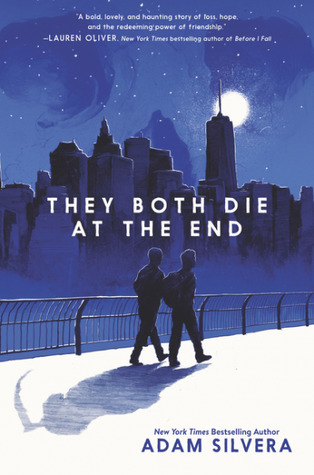Bringing sci-fi futurism together with romance, Adam Silvera’s novel is aBOUT FINDING love AMIDST CHAOS
Rufus and Mateo live in the near future in New York City. In their social-media saturated world, a mysterious company called Death Cast phones people, known as Deckers, to tell them they’re going to die within the next 24 hours. Rufus and Mateo meet through an app, Last Friend, which matches up Deckers on their last days.
They team up to resolve things in their complicated lives while also checking a few things off their bucket lists before it’s too late. And though their deaths were announced on the first page, They Both Die at the End is still a suspenseful read. We witness the most emotionally intense day of their lives and realize along with them that their relationship is more than a passing bromance. It’s love.
Heart-swelling romance
In some ways, it doesn’t matter to the story that Mateo and Rufus are two guys falling in love. It’s a heart-swelling relationship and the gender of the characters seems incidental.
But in another way, it does matter. Because representation matters.
Romances featuring gay lead characters most definitely matter to LGTBQ teens who want to see their lives reflected back to them.
They also matter to me as a mom. I want my son — all young people, really— to be exposed to stories that depict a wide range of human experiences.
I don’t know who my son’s romantic partners might be in the future, or what gender they might express. It doesn’t matter. I want him to know that all the options will be something to celebrate when the right time comes.
And even if my 9-year-old is straight — actually, especially if he’s straight and therefore part of the dominant culture — it’s important to me that he sees homosexual relationships as something to celebrate. It’s not a matter of if he will have male friends who come out as gay. It’s a matter of when.
Action and philosophy
This story is told mostly from the point of view of Rufus, a 17-year-old Cuban-American, and Mateo, a Puerto Rican 18-year-old. But brief chapters told in the points of view of minor characters provide a nuanced look at the futuristic world they inhabit and reveal how their actions affect everyone around them.
Rufus and Mateo live life large on their last day, and the reader gets to experience every moment. They go indoor skydiving, visit Mateo’s dying dad, and visit the places of New York City they love most. But there’s more to this book than action.
Rufus and Mateo spend their last 24 hours thinking about what really matters to them, and that’s the unique factor of this book.
Here are two men who manage to develop a real friendship, a bond that goes beyond the superficial. They go deep to help each other become the men they want to be.
Rufus encourages Mateo to overcome his anxiety to get out of the comfort zone of his apartment.
Mateo helps Rufus actually feel something, despite the fact that he’s about to lose everything and everyone.
Why do we ignore the reality of death? How would we live if we knew we were about to die?
Emotional intensity
I love the emotional roller coaster of this book. The intensity rivals the high-drama Netflix shows that make you want more and more … and more.
It’s partly the plot, with bad guys chasing after Rufus, and Mateo battling inner demons.
And it’s partly the futuristic story world, which features social media as a powerful force for connection and disconnection.
It has something to do with the punchy dialogue, which sizzles with realism and sensuality.
But whatever it is, I was left wanting more and more and more.
———
Like this review? For more reading recommendations, sign up for my newsletter.

Published by